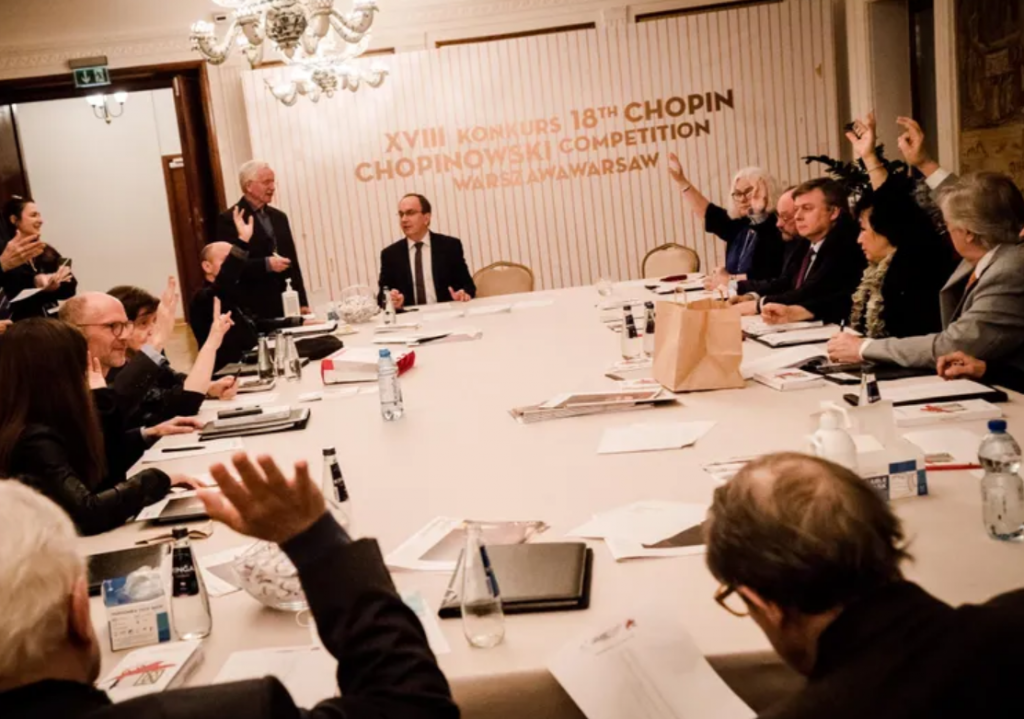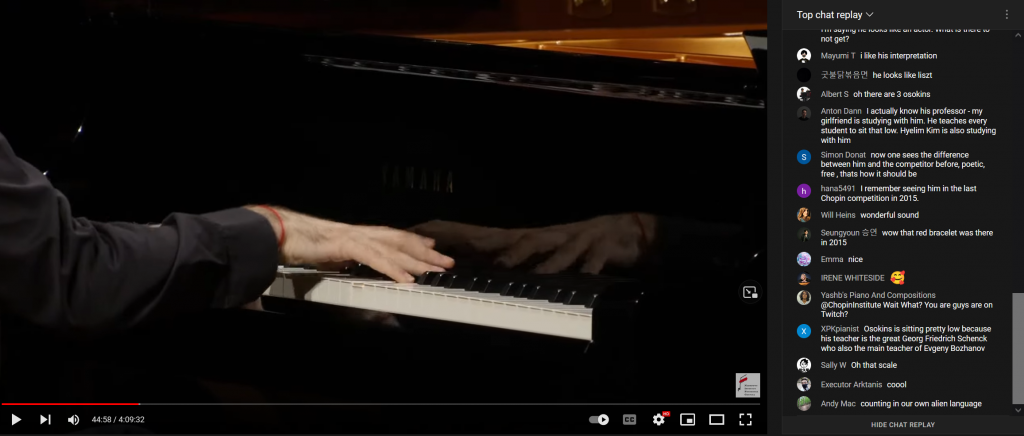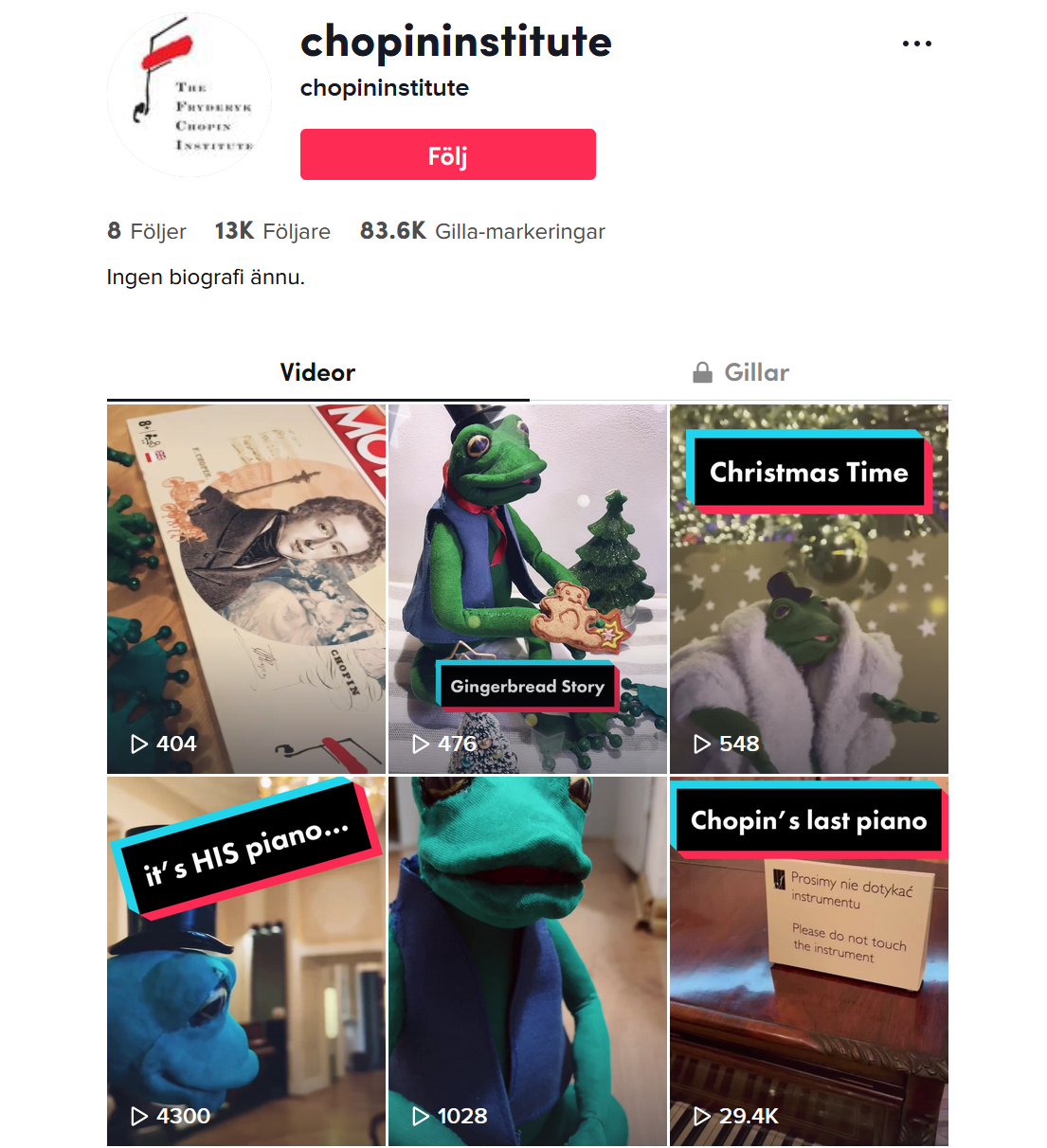Behind the Scenes at the World’s Greatest Piano Competition
– The Warsaw Omni Face – Interview with Chopin Institute’s Aleksander Laskowski
A very familiar face before and during the 18th International Chopin Competition is the one belonging to Aleksander Laskowski. Frequent in official matters, televised transmissions and in social media, the dynamic Chopin Institute’s press spokesman represents forces bringing the competition into the future. He also displays a brilliant mind in combination with an impeccable and distinct British accent. Laskowski firmly points out that his function resembles the one of a bumper-sticker on a luxurious car, whereas he is not the car itself.

A Unique Reach-out
What’s been striking with this postponed 2020 edition is the massive reach-out compared to editions before. Do we see a consequence of general digitalization or the explosive social media phenomenon in general?
Laskowski says we now see the benefits of a long process. The competition was first – and in totality – put on YouTube in 2010 and subsequently that is what the competition community started to crave. It started to grow exponentially. That was experienced in 2015, when the winner was Seong-Jin Cho. The Chopin Institute is a governmental organization receiving public money and one of its aims is to make culture available and to popularize Chopin and his music along with other Polish composers. That’s the reason why we see no paywall, not only at the Chopin Competition broadcasts. Recitals from Chopin’s birthplace in Żelazowa Wola and many concerts from the ”Chopin and His Europe” festival are also available for free. When the pandemic struck and most organizations were caught off guard simply because they were not prepared for it. The Chopin Institute was ready and had a fully functional audio-visual department.

”In fact we’re also a production company for classical music, with a good editor specializing in broadcasting live shows and with the right experience to do that. And, as we saw, everyone went online, with very varied quality, shall we say. We did have the quality, because we already worked on that level for quite a few years.” says Laskowski.

The Chopin Competition has grown not only to a national matter, it has global significance. This brings up the question of branding. ”We think that ‘Chopin’ is a very strong brand, perhaps one of the strongest Polish brands at all, arguably worldwide. So is the Chopin Competition. We thought it would be rather wise to take advantage of it. In a sense taking back the energy from the audience. They love us and they follow us, they want the competition, so we decided to give it to them in the very best way we can offer.” says Laskowski.
Channels for Visibility
In 2021 the Competition broadcast the whole preliminary round for the first time in history and on a technical quality level of the finals of the 2015 competition. Many elements were added; the competition application, a dedicated website with embedded broadcasts. Hyperactivity on all social media i.e. Facebook, Twitter, Instagram and TikTok. All this gives all a wide spectrum of geographical and cultural audiences, also in terms of age axis; from very young till the very senior people who know how to use the Internet.

Photo: TVPVOD.pl
During the competition there is a cooperation with the Polish Television, TVP, as they actually film the event and the transmission signal is provided by them. In Poland you can watch it live on Polish Television with commentary in Polish (on TVP Culture channel).
The Competition also produces their own YouTube studio in English. This means that the international channel is YouTube with English, the Polish channel is Polish Television. The competition also works with the Polish Radio, which has a long tradition of broadcasting the whole competition and of having their commentators present in the hall. ”We added some set design in the Philharmonic hall in order to make it as festive as we can, to make it stand out. We also try to invite as many press people as we can in different media forms, because YouTube allows anybody to follow the competition from home. And people appreciate high level comments and reports from the venue in Warsaw. Press collaborations include, for instance, Jed Distler who writes the Gramophone competition blog, and Piano Street who cover every single performance with added music scores. Laskowski points out that in this way the competition becomes more attractive to future competitors. The 2015 winner Seong-Jin Cho decided to take part because he watched Rafał Blechacz (winner 2005) on YouTube. Now Yike Tony Yang, who was one of laureates in 2015, said in the YouTube studio: “If you are watching the competition on YouTube right now, as I once did, and you’re a good pianist, it probably means you will be trying to be a competitor in the following edition.” A dream is born in young pianists to also come to Warsaw and participate. ”So in this way, we advertise among the young pianists.” says Laskowski.
Focus on The Artist
It’s interesting to see how the Chopin Competition has taken the initiative of being very personal with the contestants. We find small interviews with each individual and we follow them backstage and hear them in panel discussions between performances. As audience, we all get a feeling that we’re a part of the whole process. Laskowski says: ”We made over 160 interviews with all the participants before the preliminary round when they arrived in Warsaw, just in order to have it ready for the big competition. Surely, it’s a long process. You have to plan many things in advance to put together a nice picture. You get to see the introduction of a relaxed contestant, filmed many weeks before the competition, and then you go backstage and see the tension, the actual emotions at the very last moment before going on stage. You get the insider’s view, which is an added value for people who watch the competition. If you’re lucky and have a ticket, you can experience it at the Warsaw Philharmonic and then get all the additional information from YouTube when you watch it again. Actually, I think it works quite well, people enjoy watching the competition in this way.”

Photo: Chopin Institute
If we look at the interaction from a broader historical perspective – when recorded music began over 100 years ago – a kind of gap started to grow between the live performer and his/her audience. The interaction we have on all levels brings the performer and the viewer/listener back together. Listeners have an urge to comment and react on the fly. The organization was very scared how this might turn out. As some people use hate speech in the comments, a group of moderators are present to monitor the process. ”However, if we look at the statistics, the number of ”bad” comments is really at a minimum, the positive energy of the group is so strong. It actually intimidates bullies. In a sense, it is a stream of positive energy. And then if you’re a performer you get to see people saying things like “Wow, what a great rubato!”. It’s good for them, because that’s the immediate (chat) feedback, which people use and enjoy these days. Of course, our job is to make sure the contestant is always comfortable.” says Laskowski.

Photo: Chopin Institute, YouTube Channel
But the question is how to protect the contestants in these very exposed moments during their competition? The organizers had long discussions about it. The Competition wants to protect the artists from the meda but at the same time the artist both wants to be on the media and wants to be protected from the media. It is evidently very delicate to find the right balance. “We made it clear that once you’re out of the green room, you’re out of your comfort zone and your privacy, even before going on stage. Perhaps it doesn’t work with every participant in the same way. But most of them just accept it by applying for the competition, they know it will happen. So, in a way they really do want it.”
Hybrid – The New Reality?

Piano competitions have been facing the hybrid reality. They will continue to stream and it will be a natural part of all competitions everywhere. Still, it’s a fact that when you play for a microphone it’s different from when you play for the audience in the hall. Some pianists can actually benefit from digital capture making an impression that will be quite unlike their performance in the hall. And we can never get the whole sound spectrum from the digital capture.

The jury appointing Bruce Liu (CA) the Gold Medalist of the 18th International Chopin Competition. Photo: gazeta.pl
Laskowski states that this is the reason why Warsaw absolutely insisted on having a real competition. This includes the jury, the participants, the audience and the hall. Even if you play in an empty hall, the acoustic is different. Also, the vibe and energy are different. To have the audience as one of the ‘participants’ in the process is absolutely crucial for a competition. The listeners communicate emotionally with the pianists, who rarely focus on the Polish Radio microphones. “When we listen, so much depends on the equipment and on your individual ear”. Laskowski recalls a phone call he received from an elderly person stating that “the sound quality is really bad on the radio”. Regardless of the person’s radio tuning ability, we must know that the entire truth is in the hall!
Chopin Going TikTok
 One other outstanding, and for the classical music environment maybe even surprising initiative, is the Competition’s presence on TikTok with two puppet frogs as hosts of Chopin Institute’s profile. This has become a viral success with some 629.7 thousand views (at the time of the Competition). This is amazing for classical music among TikToks’s very young audience. No 20 minutes performances are offered here, but rather 30 seconds spots.
One other outstanding, and for the classical music environment maybe even surprising initiative, is the Competition’s presence on TikTok with two puppet frogs as hosts of Chopin Institute’s profile. This has become a viral success with some 629.7 thousand views (at the time of the Competition). This is amazing for classical music among TikToks’s very young audience. No 20 minutes performances are offered here, but rather 30 seconds spots.
Laskowski says: “Some people would consider TikTok a bit outlandish for classical music. However, this is a way of saying to young people: “Here is another world that you might not know about. Come and check it out”. And perhaps when they grow up, they will remember. And maybe they will think, “Oh, the frog composer is cool, let’s listen to his piano music.” So, we are extremely pleased with being on TikTok. And I don’t think you will find any other classical music institution that is so active in this new medium. We are trying to be trailblazers. We have a wonderful team of young people who have serious backgrounds in classical music and who love their job, because – you know – we work almost around the clock.”
Comments
Haha that bit with TikTok is great! Who are these crusty, close-minded people who think TikTok is too outlandish for classical music? If classical music restricts itself to dying traditions it will die too. We need it to be naturally present in today’s cultural mix.